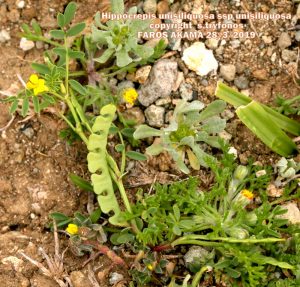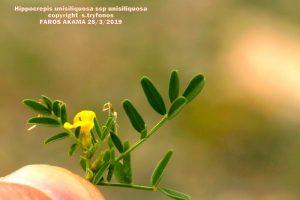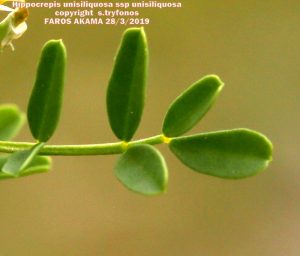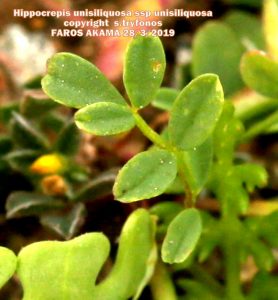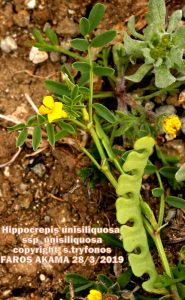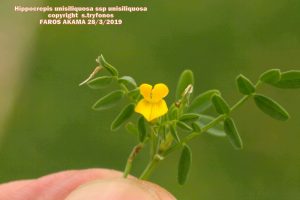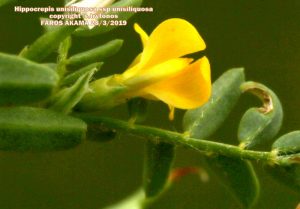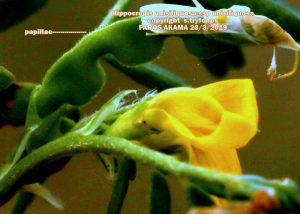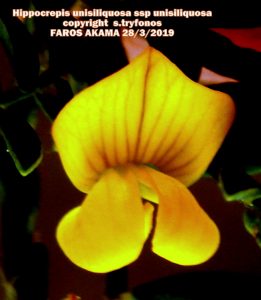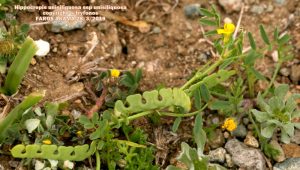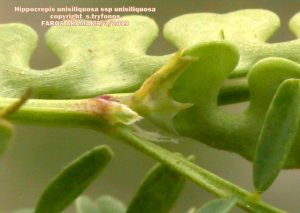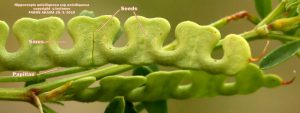Name/Όνομα: Ιπποκρεπίς η μονόκαρπος υποειδ. μονόκαρπος *
Scientific name/Επιστημονικό όνομα: Hippocrepis unisiliquosa L.ssp unisiliquosa
Common name/Κοινό Όνομα: Single-flowered Horseshoe Vetch
Family/Οικογένεια: FABACEAE
* Η απόδοση του είδους στα Ελληνικά είναι εισήγηση του συγγραφέα.
Description
Plant: Annual herb growing up to 40 cm high.
Stem/s: Prostrate or ascending, much-branched below, angular, glabrous or thinly hairy.
Leaves: Alternate, compound, oblong in outline, odd-pinnate, petiolate; leaflets alternate (lower leaflets) or opposite (upper leaflets), in 3-7 “pairs”, oblong, elliptic or obovate, base cuneate, apex acute or truncate or shallowly emarginate; stipules linear-lanceolate, subglabrous,, occasionally with a gland at the junction with the stem.
Flowers: Strongly zygomorphic and hermaphrodite, axillary and usually solitary, more rarely in pairs; peduncle very short; bracts membranous; petals 5, standard petal erect, semicircular, apex rounded and mucronate, somewhat auriculate at the base, wings broadly-ovate or obovate, slightly concave, reduced at the base, keel upcurved; calyx funnel-shape, subglabrous, 2-lipped, upper lip 2-toothed, teeth triangular, shorter those of the lower lip, connate for 1/3 of their length or more; stamens 10; ovary superior, style 1, stigma 1.
Flowering time: March-May
Fruit: Legume (pod), straight or curved, flat, with 7 or more, glabrous or slightly papillose at apex horseshoe-segments, with drop-shaped or U-shaped sinuses, constricted between seeds
Habitat: Waste ground, slopes, stream-banks, sea-shore, from 0-750 m alt.
Native: Eastern Mediterranean region, Western Asia.



